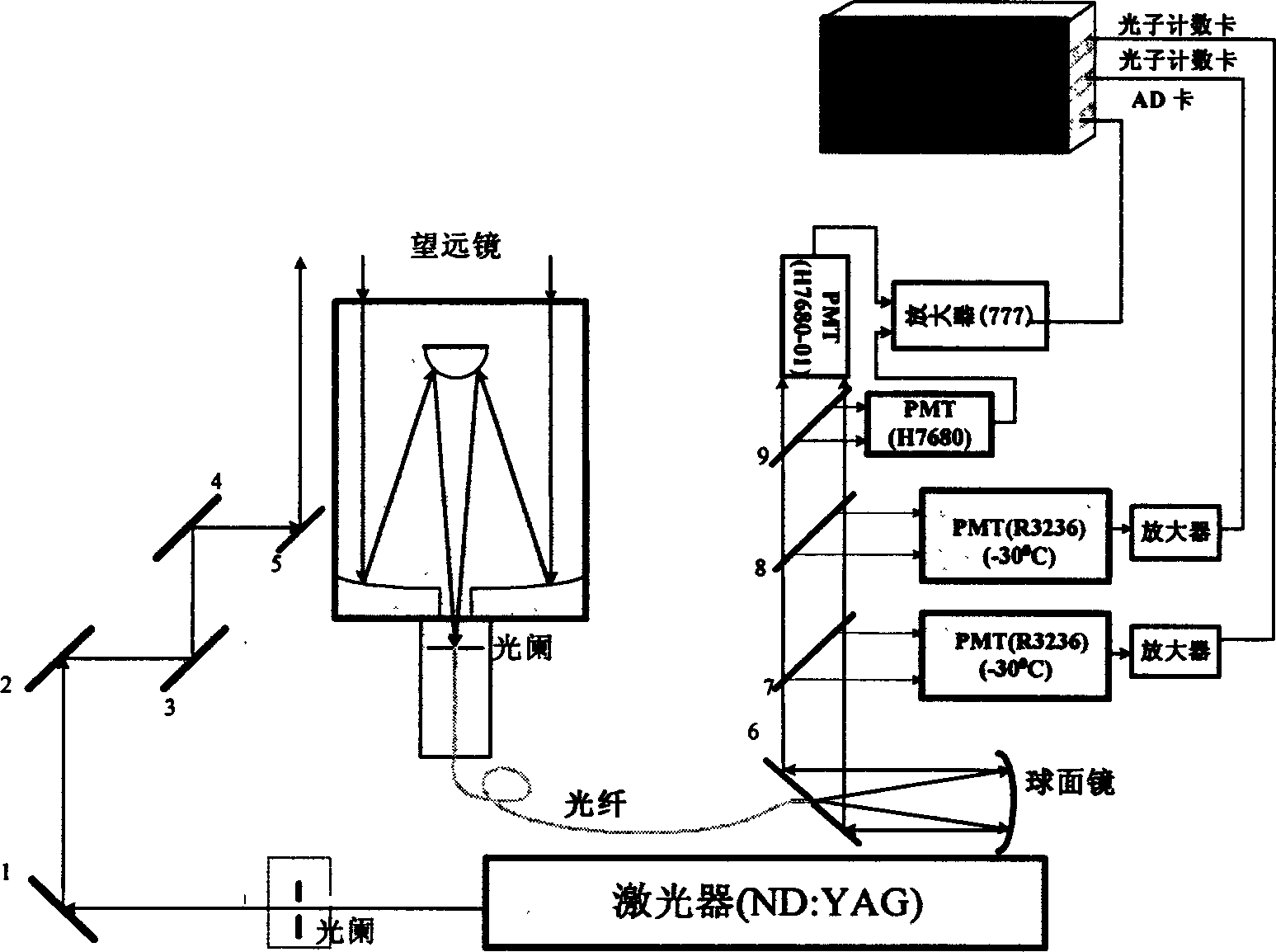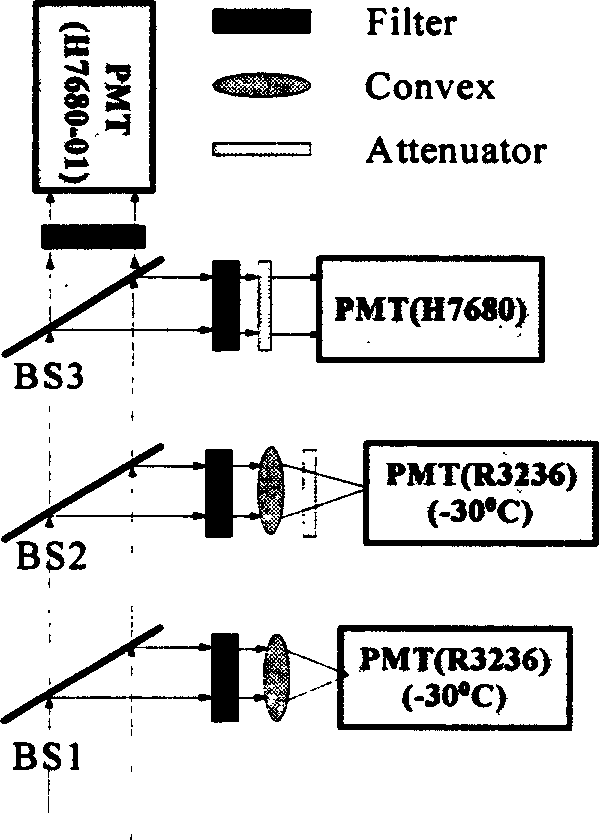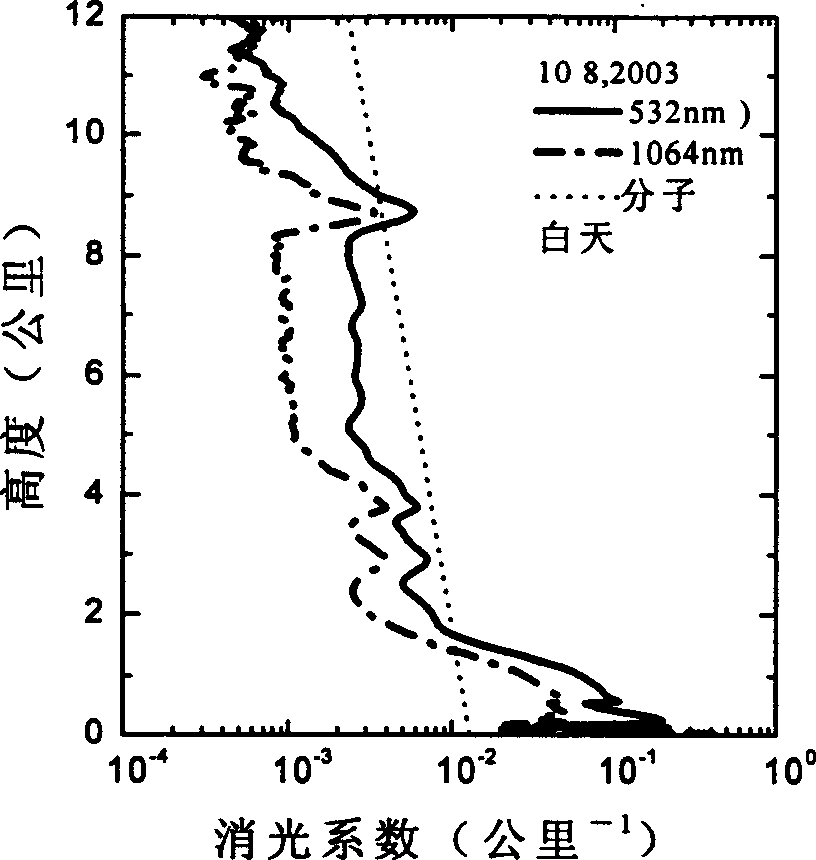Vehicle carried biware length scattering laser radar
A laser radar, dual-wavelength technology, applied in the measurement of scattering characteristics and other directions
- Summary
- Abstract
- Description
- Claims
- Application Information
AI Technical Summary
Problems solved by technology
Method used
Image
Examples
Embodiment Construction
[0040] see figure 1 . The present invention is made up of following four units:
[0041] 1. Dual-wavelength laser emission unit
[0042] The function of the laser emitting unit is that when the receiving telescope is pitching, the laser beam can be kept equidistant from the optical axis of the receiving telescope and enter the atmosphere along a direction parallel to the optical axis.
[0043] The laser emitting unit includes a Nd:YAG laser, an aperture and a light guide system composed of 5 mirrors. A diaphragm and a total reflection mirror 1 are installed in front of the laser. After the laser is reflected by the total reflection mirror 1, it is reflected by four total reflection mirrors 2, 3, 4, and 5 that are parallel to each other and opposite to each other. The optical axis and the receiving telescope parallel.
[0044]The Nd:YAG laser is Brill from Quantel, France. It simultaneously outputs lasers with fundamental frequency 1064nm and double frequency 532nm. The si...
PUM
 Login to View More
Login to View More Abstract
Description
Claims
Application Information
 Login to View More
Login to View More - R&D
- Intellectual Property
- Life Sciences
- Materials
- Tech Scout
- Unparalleled Data Quality
- Higher Quality Content
- 60% Fewer Hallucinations
Browse by: Latest US Patents, China's latest patents, Technical Efficacy Thesaurus, Application Domain, Technology Topic, Popular Technical Reports.
© 2025 PatSnap. All rights reserved.Legal|Privacy policy|Modern Slavery Act Transparency Statement|Sitemap|About US| Contact US: help@patsnap.com



